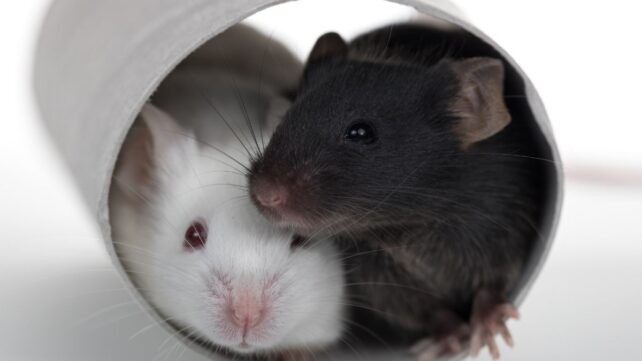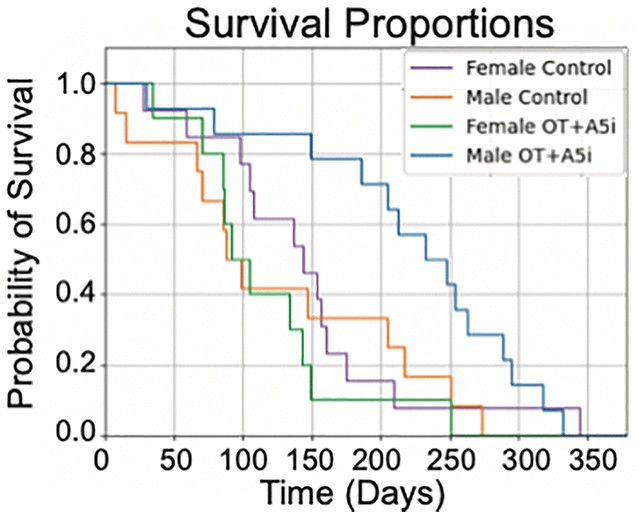73% Longer Lifespan for Male Mice—A Shocking Sex Difference in an Anti-Aging Trial
Scientists at the University of California, Berkeley, tested a two-drug combination that targets two aging pathways at once. In frail, 25‑month‑old mice—the human equivalent of about 75 years—the therapy extended male lifespans by up to 73 percent and increased the overall median lifespan by roughly 14 percent. Treated males also showed improvements in physical performance, blood protein markers, and short‑term memory, suggesting aging could be slowed or partially reversed in these animals.

In This Article:
Two Aging Pathways, One Therapy: OT and A5i Explained
Oxytocin (OT) is a natural hormone and neurotransmitter best known for social bonding; in aging, it supports muscle growth and tissue repair. Alk5 inhibitors (A5i) dampen the transforming growth factor beta (TGF-beta) pathway, which tends to become overactive with age, driving tissue damage and chronic inflammation. Together, OT and A5i aim to rebalance aging signals and slow degeneration.

What the Data Show: Benefits in Males, Not Females
The study reports a remarkable life extension in old frail male mice treated with OT+A5i: up to 73 percent longer life from the start of treatment and a 14 percent increase in median lifespan. In addition, treated males performed better on physical tests, had healthier blood protein profiles, and showed improved short‑term memory. Notably, there was no lifespan extension observed in female mice under the same treatment, highlighting a sex‑specific response.

Why the Sexes Diverged Is Not Yet Clear; Fertility Hints at Younger Timing
Researchers acknowledge that the causes of the sex‑based differences remain unknown. They note that treating female mice with OT+A5i at late middle age rejuvenated fertility, hinting that timing and biology matter. The team suggests future studies could explore applying the therapy to female mice at younger ages to see if benefits emerge.

From Mice to Humans: Promise, Caveats, and Next Steps
Translating these findings to people will require extensive work. Any anti‑aging therapy must be effective and safe, with minimal side effects. The researchers point out that OT is already approved for other uses (such as labor induction) and A5i drugs are being tested in cancer research, potentially easing safety checks for aging applications. Even if this exact drug combo never reaches patients, the study illuminates how dual‑pathway strategies might slow aging and improve healthspan, a growing priority as populations age. Researchers also caution that aging is a carefully balanced system—tweaks in one pathway can disrupt others.

